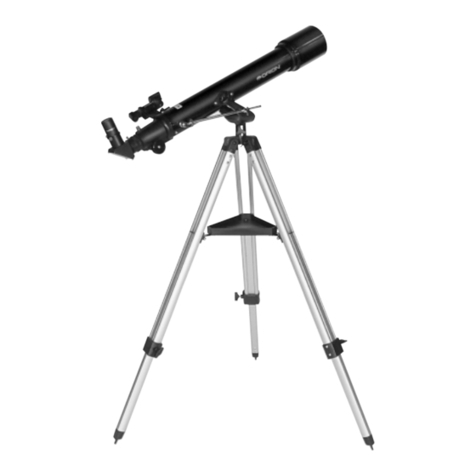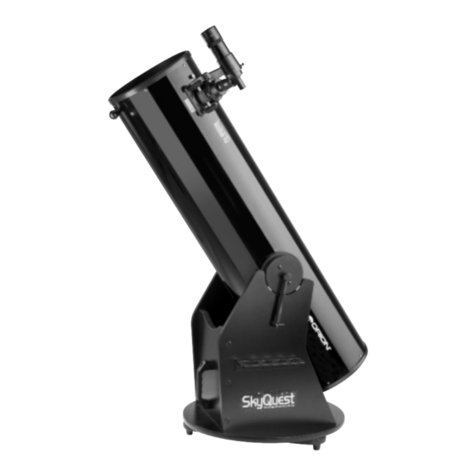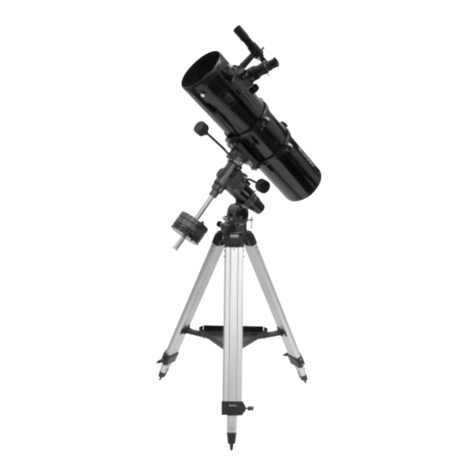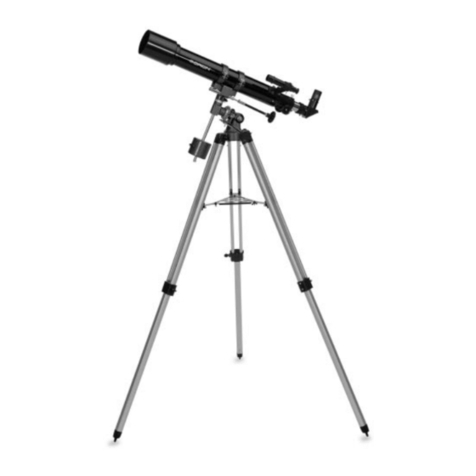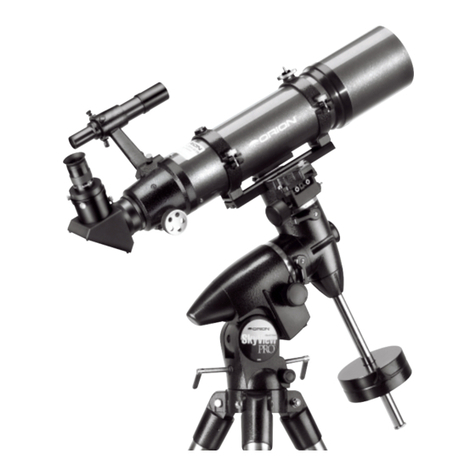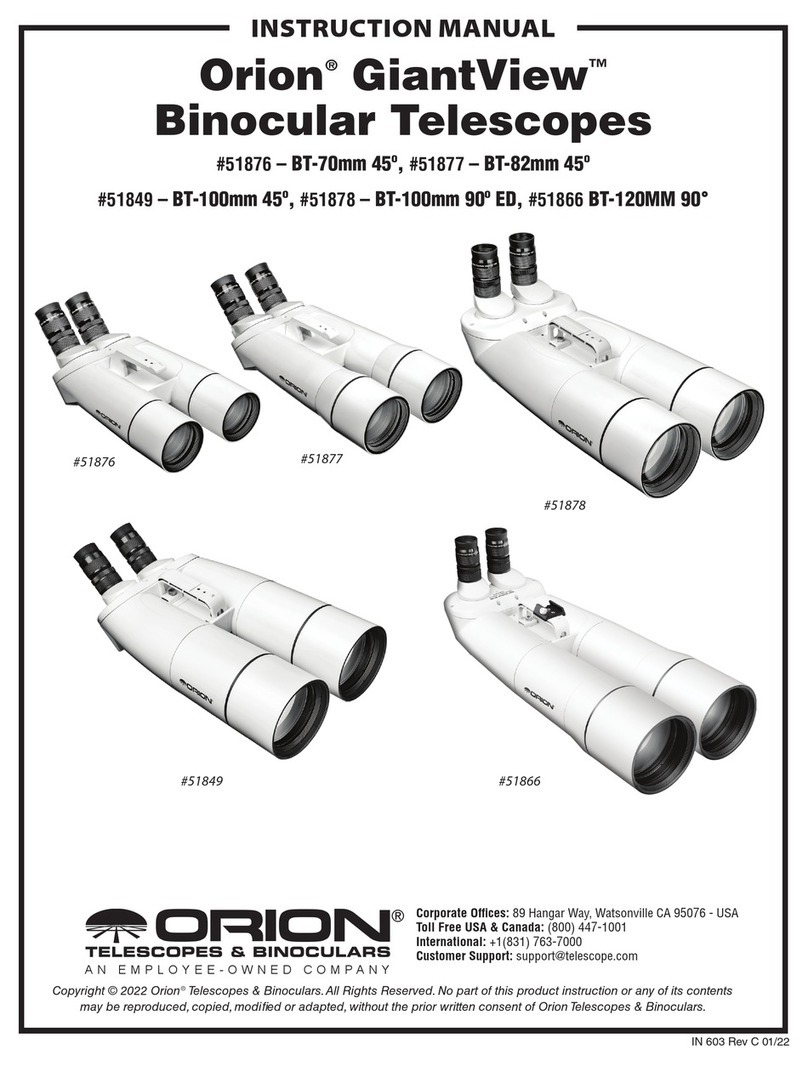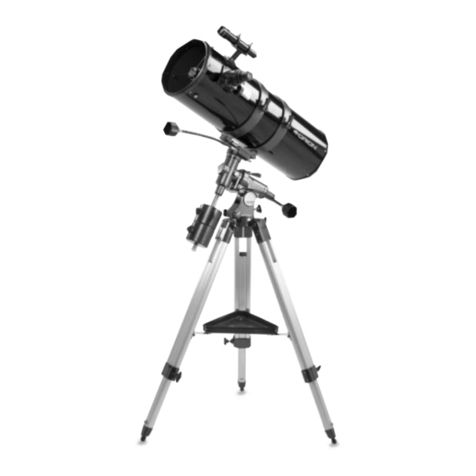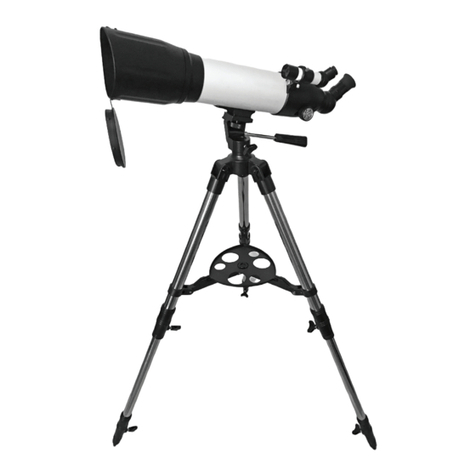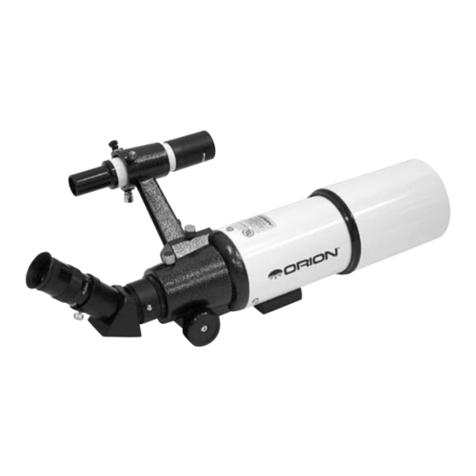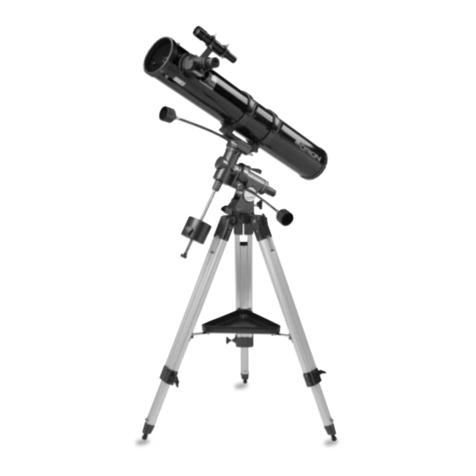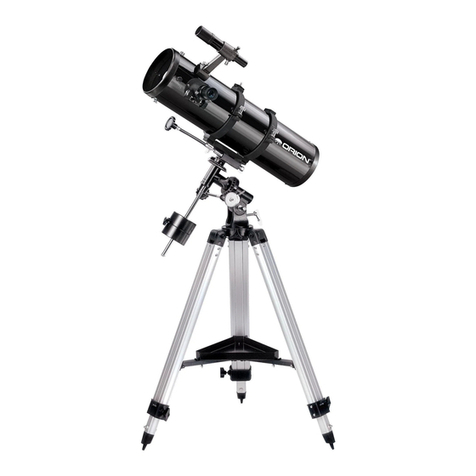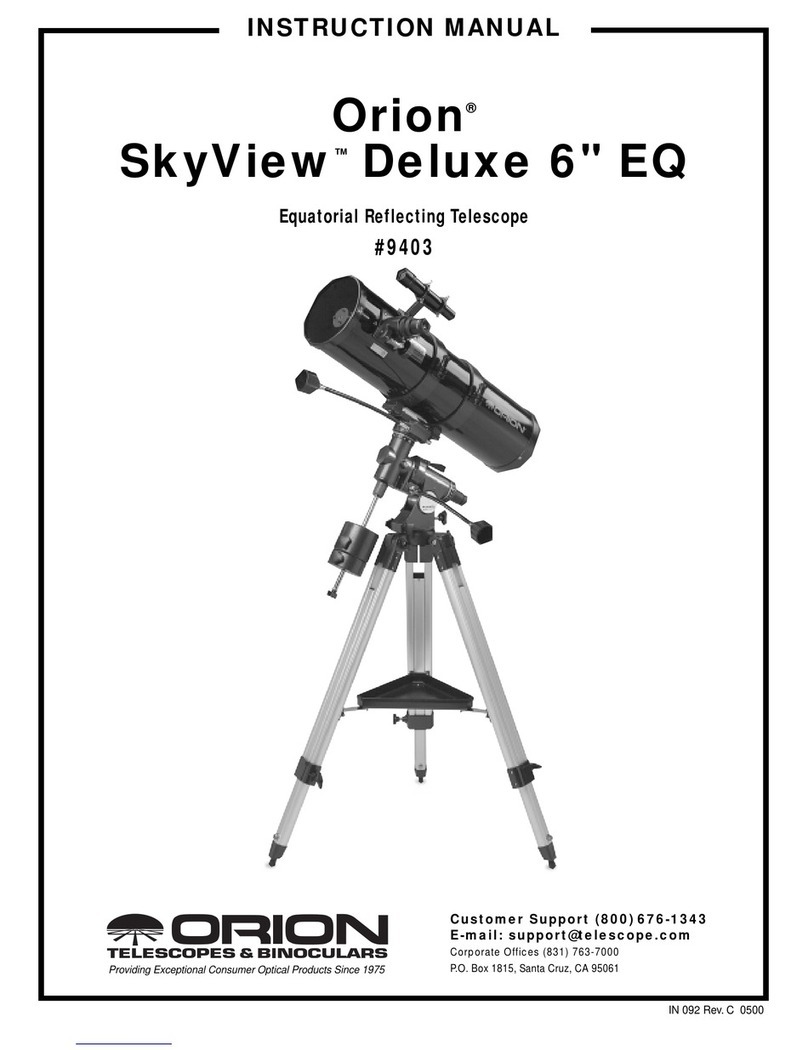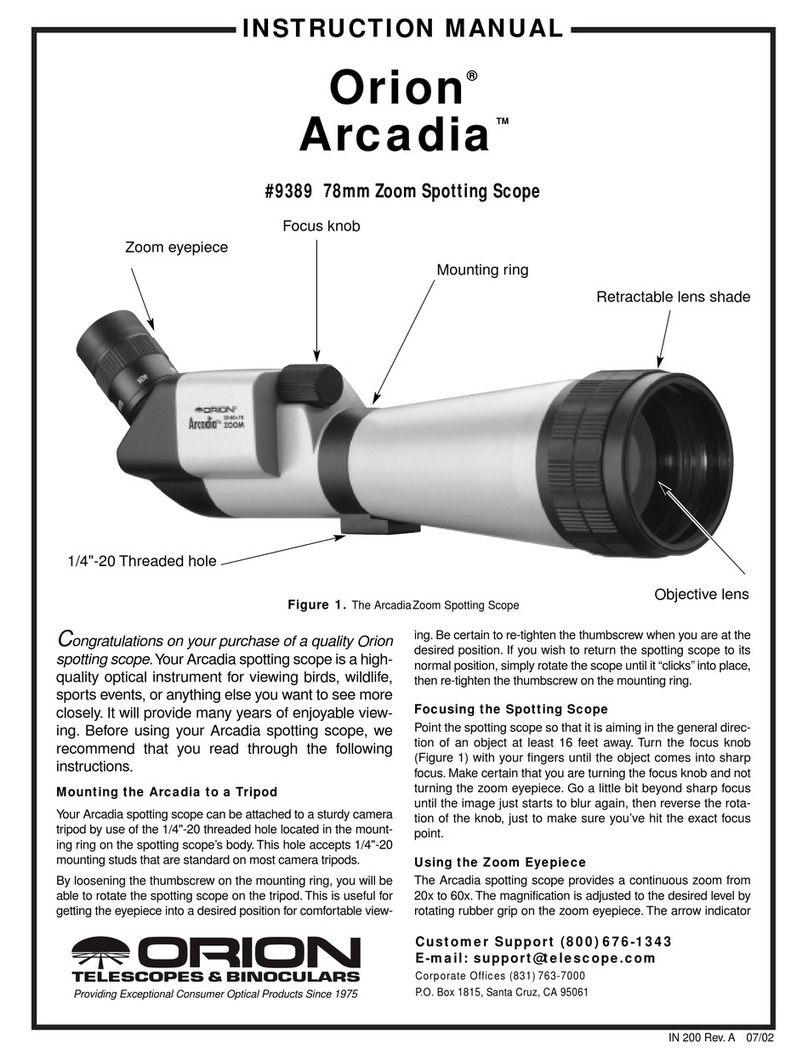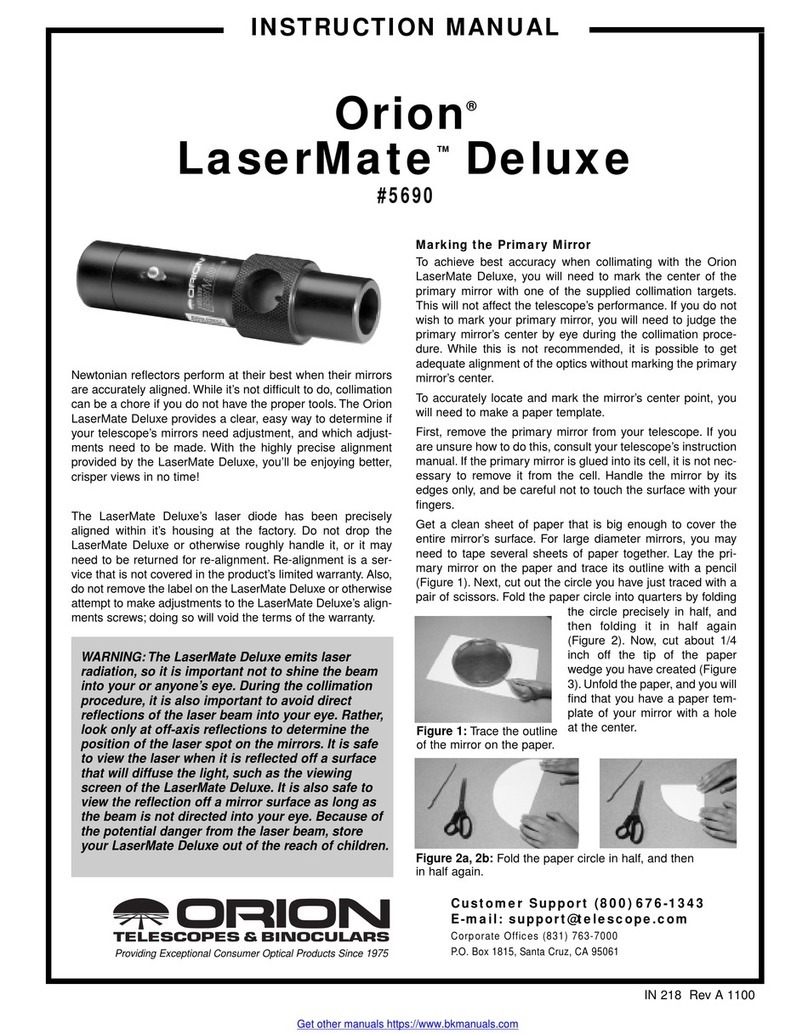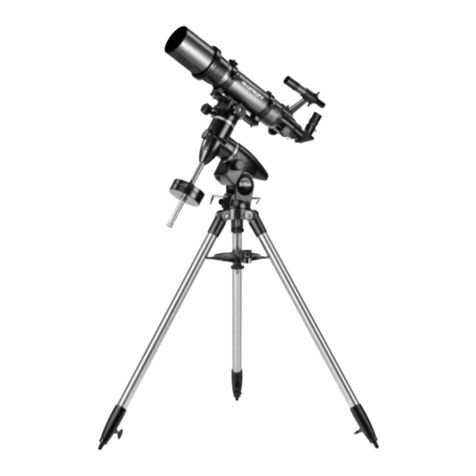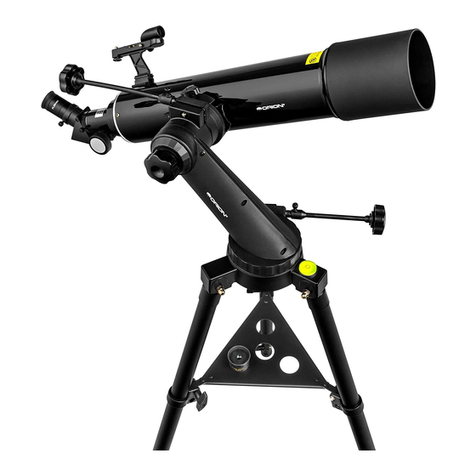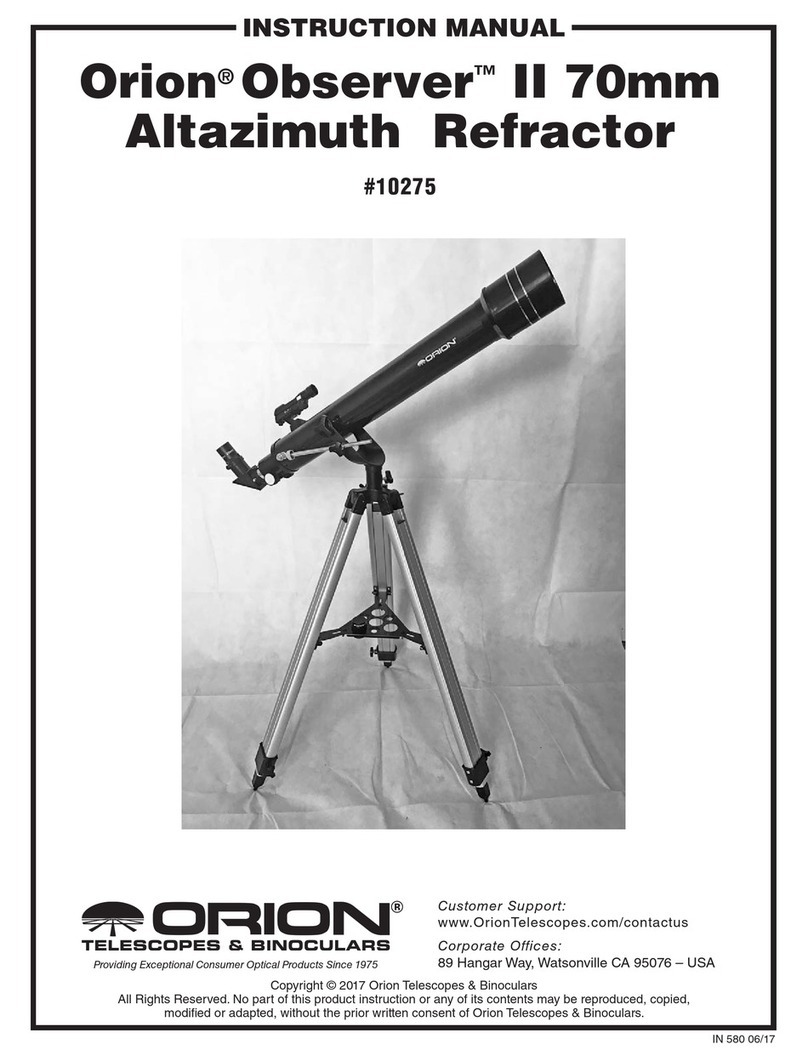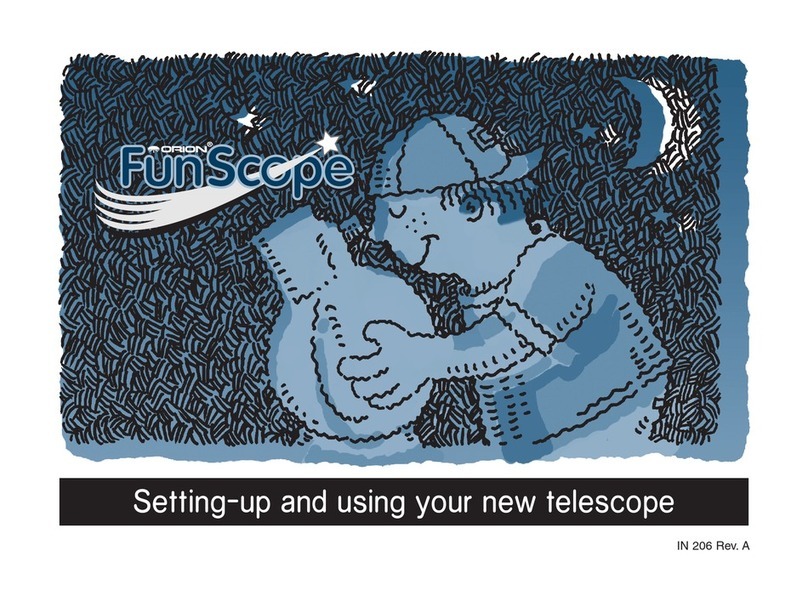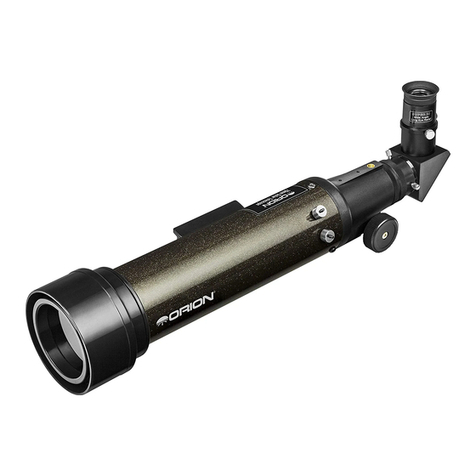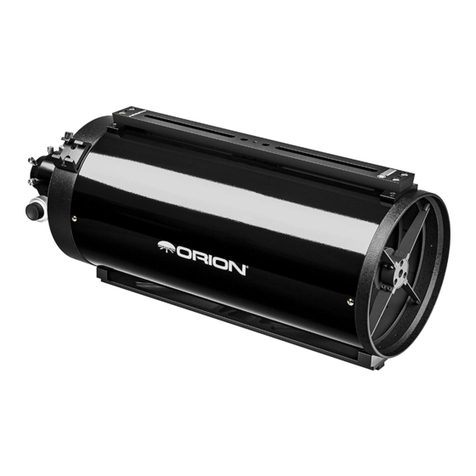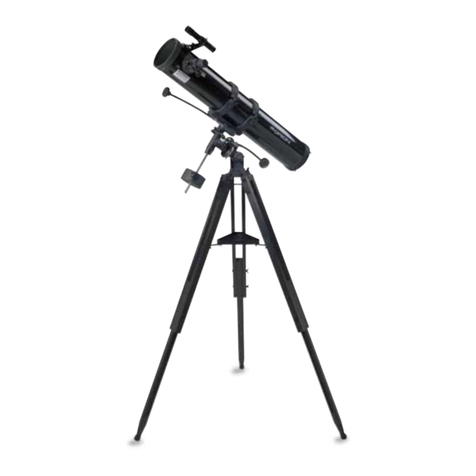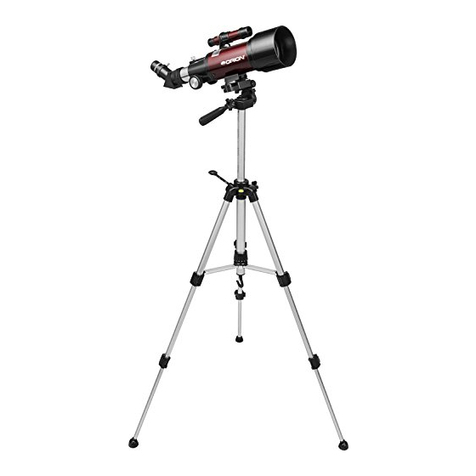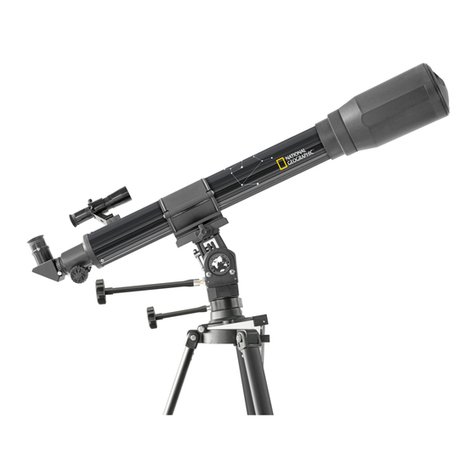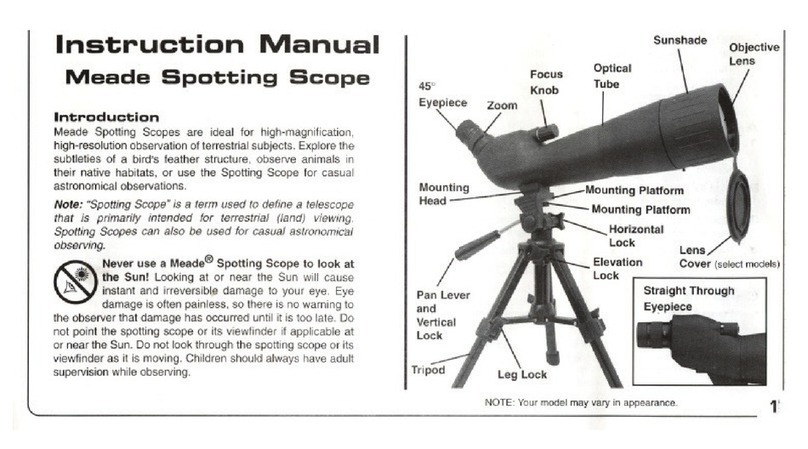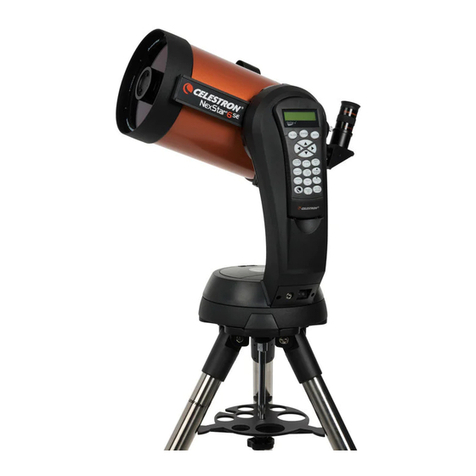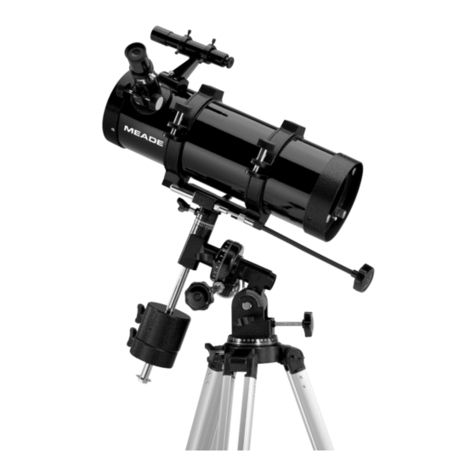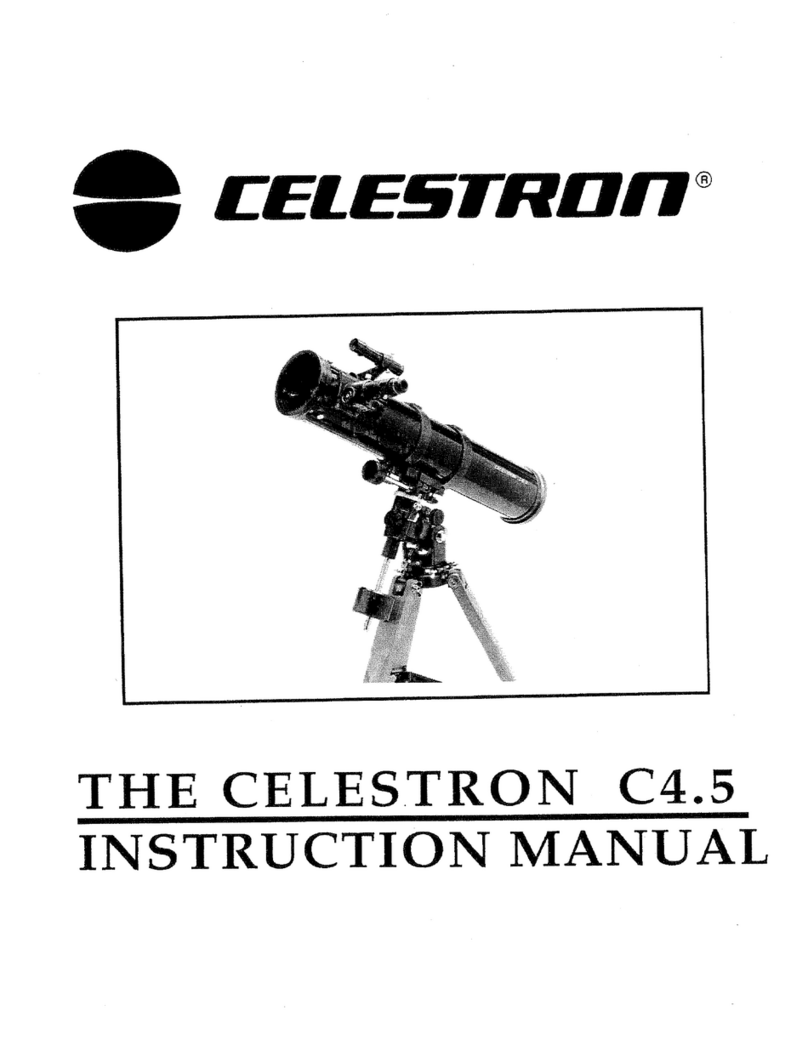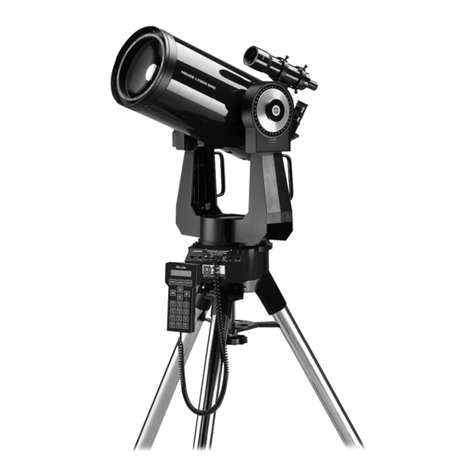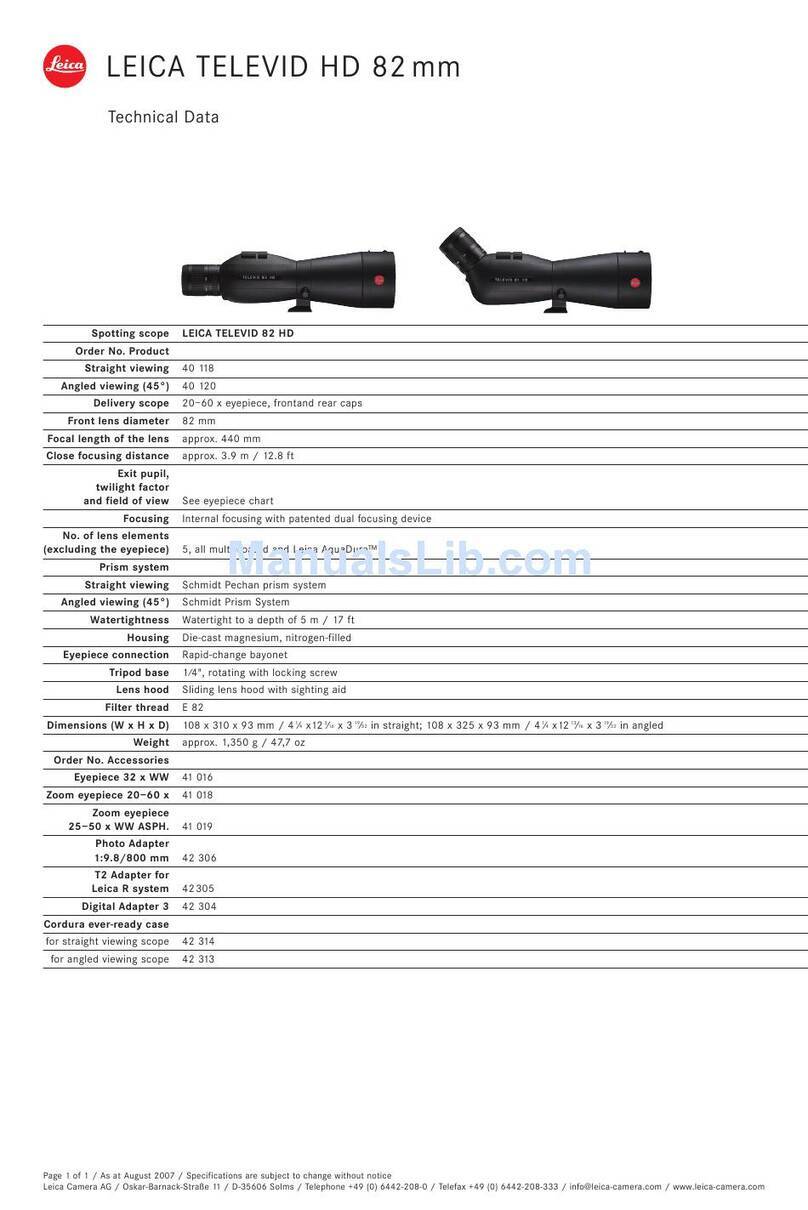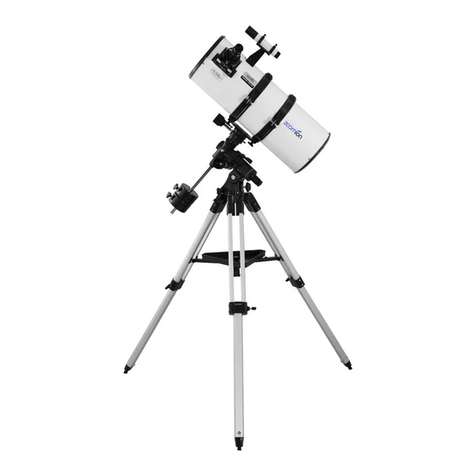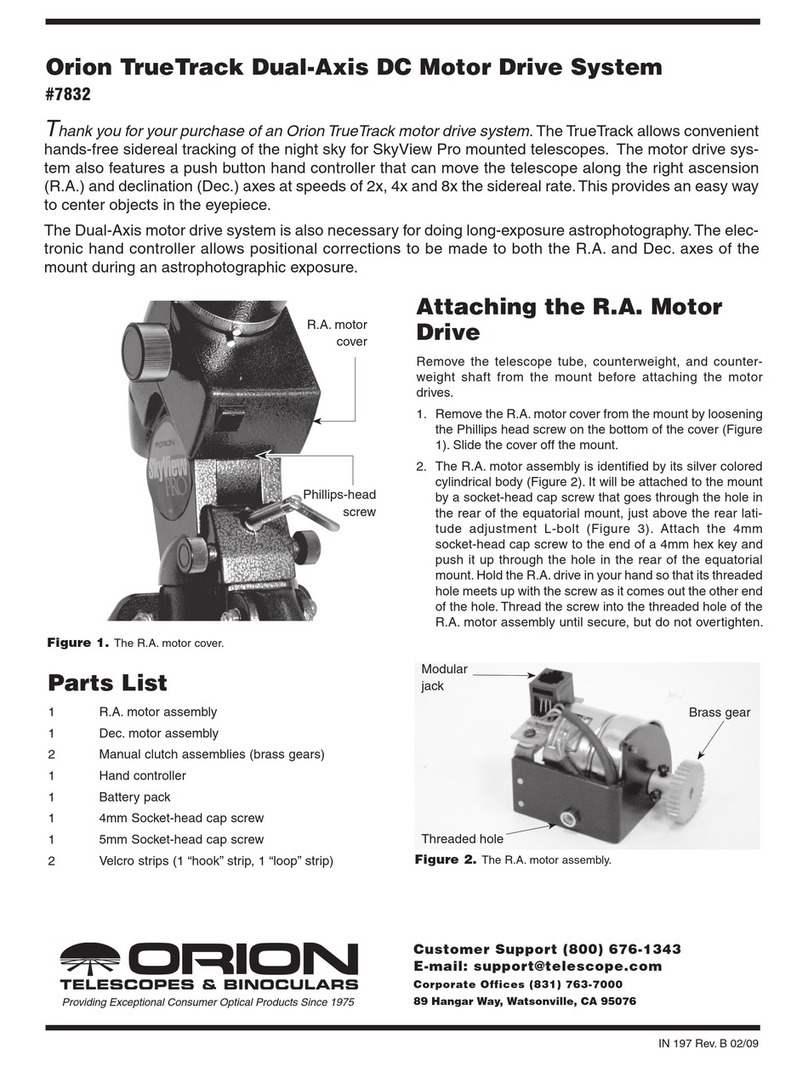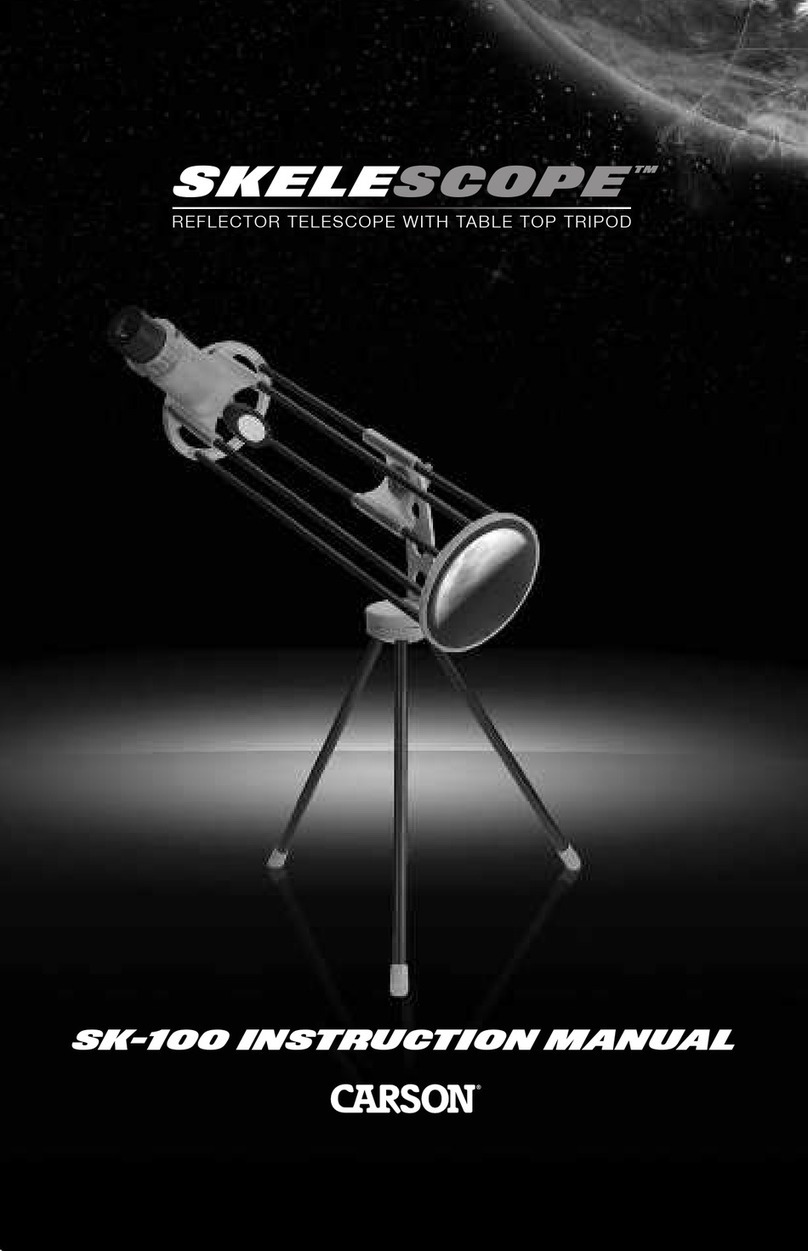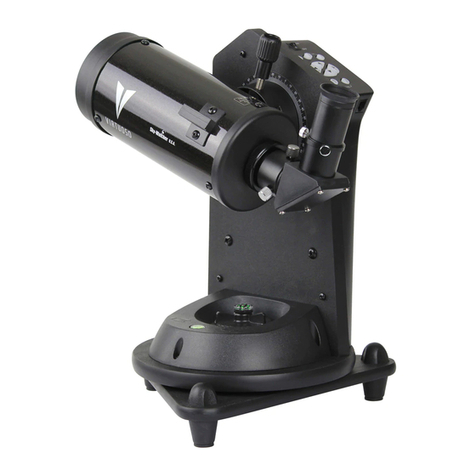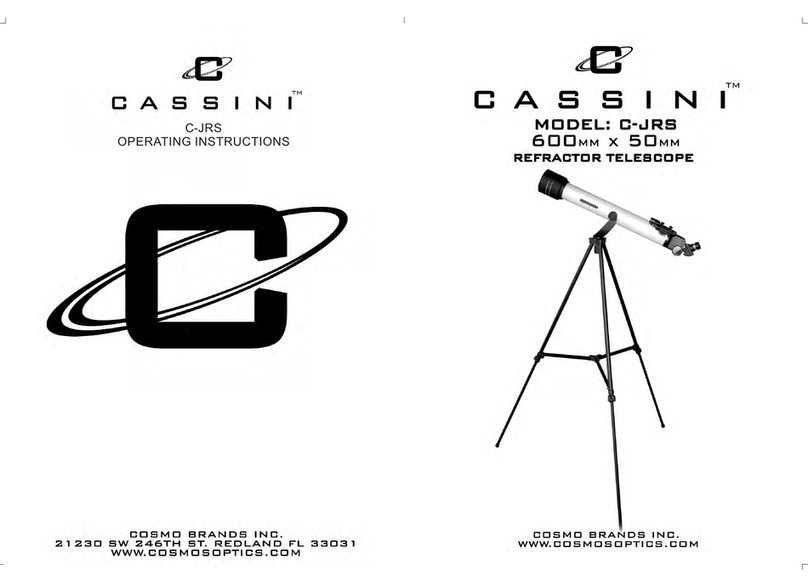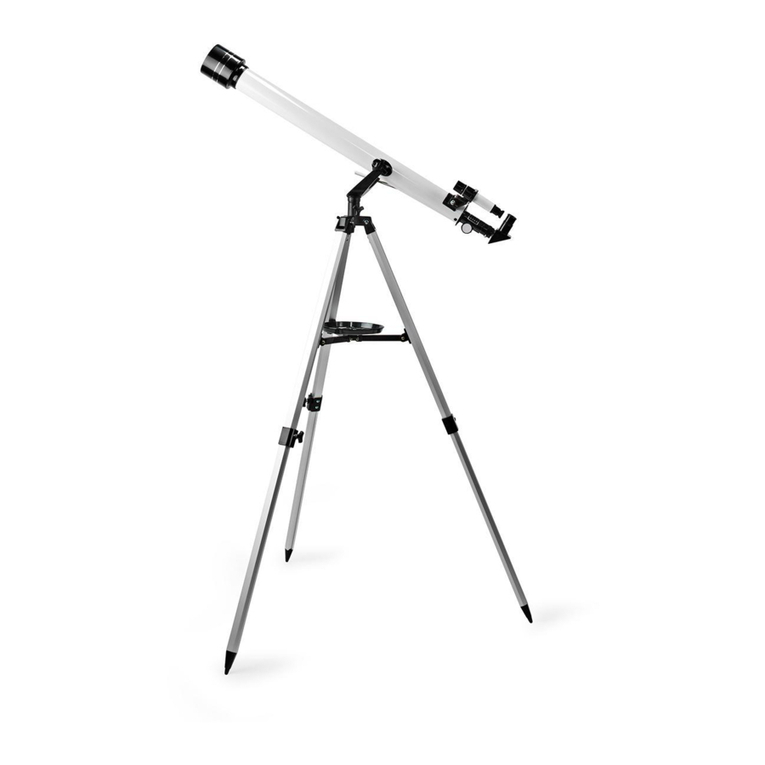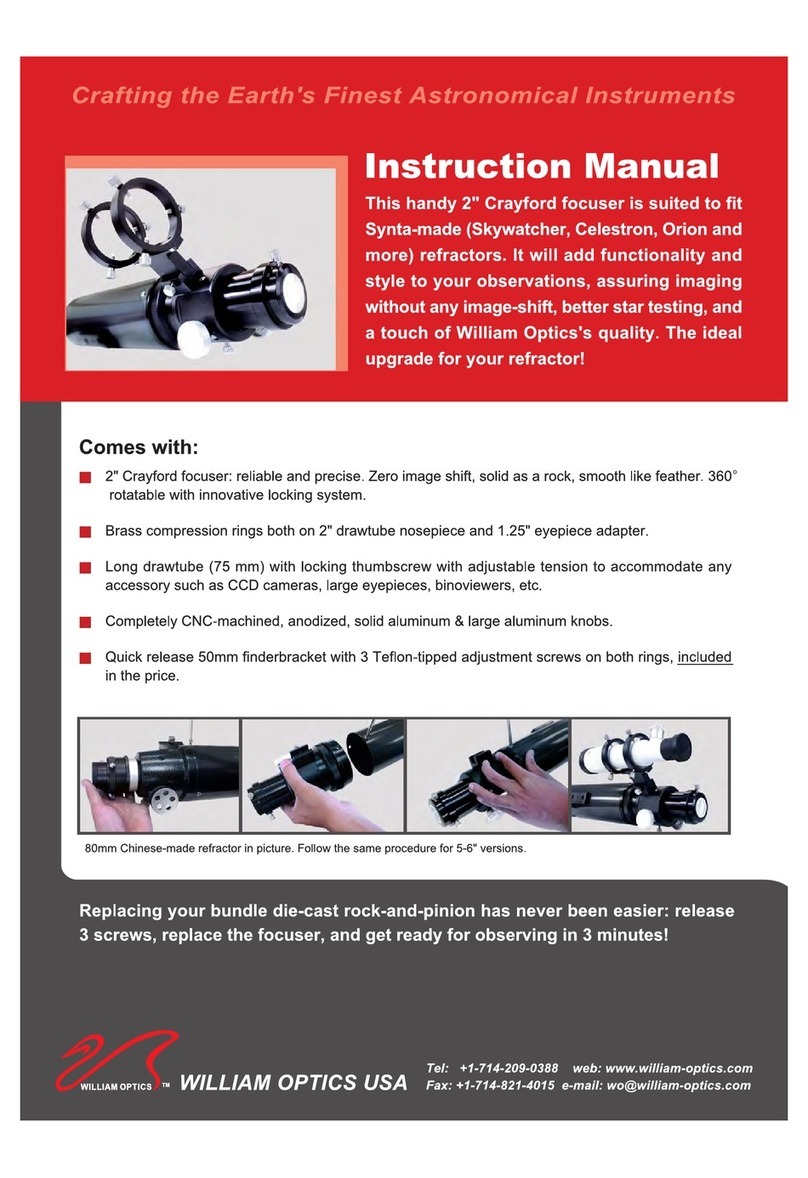
10
numbers on the R.A. setting circle if you’re in the Northern
hemisphere. Retighten the lock knob.
2. Loosen the Dec. lock knob and rotate the telescope until
the Dec. value from the star atlas matches the reading on
the Dec. setting circle. Remember that values of the Dec.
setting circle are positive when the telescope is pointing
north of the celestial equator (Dec. = 0°), and negative
when the telescope is pointing south of the celestial equa-
tor. Retighten the lock knob.
Most setting circles are not accurate enough to put an object
dead-center in the telescope’s eyepiece, but they should
place the object somewhere within or near the eld of view
of the nder scope, assuming the equatorial mount is accu-
rately polar aligned. Use the slow-motion controls to center the
object in the nder scope, and it should appear in the tele-
scope’s eld of view.
The R.A. setting circle must be re-calibrated every time you
wish to locate a new object. Do so by calibrating the setting
circle for the centered object before moving on to the next one.
Confused About Pointing the Telescope?
Beginners occasionally experience some confusion about how
to point the telescope overhead or in other directions. One
thing you DO NOT do is make any adjustment to the mount’s
latitude setting or to its azimuth position. That will throw off the
mount’s polar alignment. Once the mount is polar aligned, the
telescope should be moved only about the R.A. and Dec. axes.
This is done by loosening one or both of the R.A. and Dec.
lock knobs and moving the telescope by hand, or keeping the
knobs tightened and moving the telescope using the slow-
motion cables.
IX. Collimating the Optics
(Aligning the Mirrors)
Collimating is the process of adjusting the mirrors so they are
aligned with one another. Your telescope’s optics were aligned
at the factory, and should not need much adjustment unless
the telescope is handled roughly. Accurate mirror alignment is
important to ensure the peak performance of your telescope,
so it should be checked regularly. Collimating is relatively easy
to do and can be done in daylight.
To check collimation, remove the eyepiece and look down the
focuser drawtube . You should see the secondary mirror cen-
tered in the drawtube, as well as the reection of the primary
mirror centered in the secondary mirror, and the reection of
the secondary mirror (and your eye) centered in the reection
of the primary mirror, as in Figure 15a. If anything is off-center,
proceed with the following collimating procedure.
The Collimation Cap and Mirror Center Mark
Your AstroView 6 comes with a collimation cap. This is a sim-
ple cap that ts on the focuser drawtube like a dust cap, but
has a hole in the center and a silver bottom. This helps center
your eye so that collimating is easy to perform.
Figures 15b through 15e assume you have the collimation
cap in place. In addition to providing the collimation cap, you’ll
notice a tiny ring (sticker) in the exact center of the primary
mirror. This “center mark” allows you to achieve a very pre-
cise collimation of the primary mirror; you don’t have to guess
where the center of the mirror is. You simply adjust the mirror
position (described below) until the reection of the hole in the
collimation cap is centered inside the ring. NOTE: The center
ring sticker need not ever be removed from the primary mirror.
Because it lies directly in the shadow of the secondary mir-
ror, its presence in no way adversely affects the optical perfor-
mance of the telescope or the image quality. That might seem
counterintuitive, but it’s true!
Aligning the Secondary Mirror
With the collimation cap in place, look through the hole in the
cap at the secondary (diagonal) mirror. Ignore the reections
for the time being. The secondary mirror itself should be cen-
tered in the focuser drawtube, in the direction parallel to the
length of the telescope. If it isn’t, as in Figure 15b, it must be
adjusted. Typically, this adjustment will rarely, if ever, need to
be done. It helps to adjust the secondary mirror in a brightly lit
room with the telescope pointed toward a bright surface, such
as white paper or wall. Placing a piece of white paper in the
telescope tube opposite the focuser (i.e., on the other side of
the secondary mirror) will also be helpful in collimating the sec-
ondary mirror. Using an Allen wrench, loosen the three small
alignment setscrews in the center hub of the 3-vaned spider
Figure 17. Primary mirror collimation screws. Clockwise around
the perimeter, the left screw in each pair is the "pull screw" and the
right screw is the "push" screw.
Push screw
Push screw
Push screw
Pull screw
Pull screw
Pull screw
Figure 18. A star test will determine if a telescope’s optics are
properly collimated. An unfocused view of a bright star through
the eyepiece should appear as illustrated on right if optics are
perfectly collimated. If circle is unsymmetrical, as in illustration on
left, scope needs collimation.
Out of collimation Collimated
